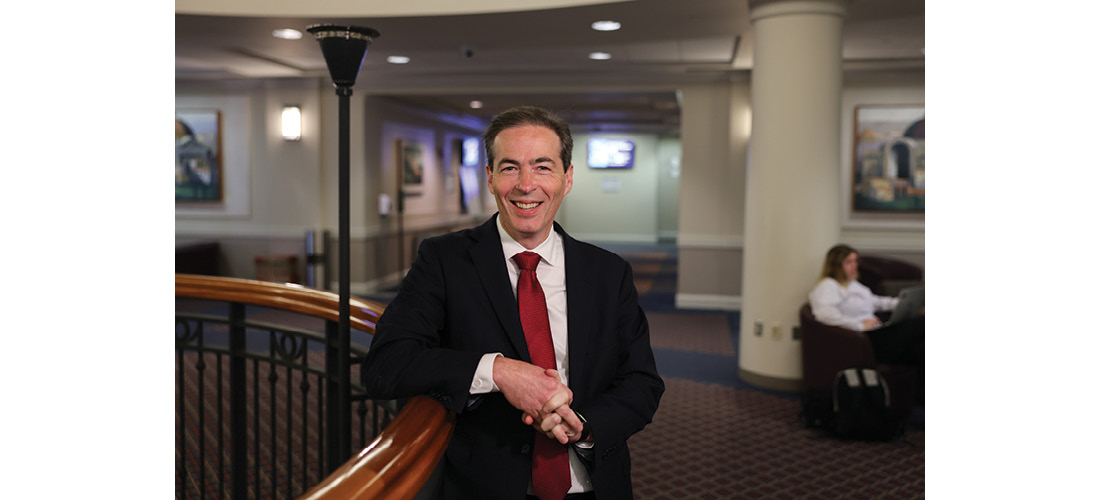When it comes to deregulation of the legal industry, divisions run deep

The debate on the deregulation of the legal industry is as highly charged as ever. And while many agree there’s a problem, reaching a consensus on the best way forward has proved elusive. Image from Shutterstock.
In 2020, Utah and Arizona ushered in reforms to experiment with allowing outside investment of law firms and legal services. It was hoped the changes would help bridge the justice gap. By some estimates, each year 30 million people in the U.S. are forced to tackle civil legal problems on their own, and in two-thirds of all civil cases, at least one party goes to court without a lawyer.
“We’ve got to find a way to close the gap and get people the legal services that lawyers went to school to deliver and that people desperately need,” says Sonja Ebron, a 2023 ABA Journal Legal Rebel, and co-founder and CEO of Courtroom5, a platform helping pro se litigants via online training.
But three years later, the debate on the deregulation of the legal industry is as highly charged as ever. And while many agree there’s a problem, reaching a consensus on the best way forward has proved elusive.
Those in the pro-reform camp say technological innovation and outside investment could make services cheaper and more accessible to people going to court to decide custody of their children or matters related to their health care, debts and housing. Critics of deregulation argue the bar should lead the way, creating programs that make it easier for people to get legal help.
As a case in point, lawyer and former New Jersey State Bar Association President Jeralyn L. Lawrence says her state bar has launched software called Legal Edge that has matched more than 400 unrepresented people with attorneys at reduced rates. Although there are no immediate efforts to allow outside ownership interests in New Jersey law firms, she believes allowing nonlawyers to have law firm ownership interests is not the answer.
“Certainly, embrace innovation and technology; but lawyers need to practice law, and lawyers are capable of solving all of these problems,” Lawrence says, adding that rural practice and legal aid initiatives, pro bono services and free legal research tools can help fill the void.
Rule 5.4 of the American Bar Association’s Model Rules of Professional Conduct bars nonlawyer ownership of law firms and fee sharing. Supporters of the rule say allowing outside corporate interests creates conflicts and undermines the ability of the courts to regulate the profession.
But for reform-minded advocates who don’t believe that lawyers alone can narrow the justice gap, Arizona’s decision in 2020 to become the first state to do away with Rule 5.4 was a welcome development. The same year, Utah created a so-called “sandbox” to experiment with new ways of delivering legal services.
In some Utah districts, 95% of people do not have a lawyer to represent them in court, according to Utah Supreme Court Justice Diana Hagen. So far, the court has found no evidence of consumer harm and it will next measure whether the changes are widening access to legal services.
Hagen highlights the work of Rasa Legal, an app that helps people expunge their criminal records, and Timpanogos Legal Center, a nonprofit that works with domestic violence victims. She says the organization helps people with court filings so they can get injunctions or protective orders.
“Our audit of those groups showed that the quality of legal advice was not just on par but perhaps superior to what they would get from an attorney who doesn’t specialize in that area,” Hagen says.
Early experimentation
According to the University of Denver’s Institute for the Advancement of the American Legal System, states including Alaska, California, Illinois, Connecticut, Florida, Michigan, New Hampshire, New Mexico, New York, Oregon, Virginia and Washington, and Washington, D.C., have explored innovations or regulatory reforms.
In 2020, the California State Bar rubber-stamped the creation of the Closing the Justice Gap Working Group to look into proposals for a regulatory sandbox and training nonlawyers to help Californians with their legal problems. However, the group was disbanded after state lawmakers passed a bill in 2022 putting the brakes on deregulation. The move was a disappointment to some because California is often a bellwether for reforms.
Ruben Duran, managing partner of law firm Best Best & Krieger’s Ontario, California, office and former chair of the State Bar of California Board of Trustees, hopes it won’t be the last word on the subject.
“Californians deserve every reasonable opportunity to have their legal needs addressed in a way that is affordable,” he says.
There have been other setbacks. In March 2022, the Florida Supreme Court rejected proposals to experiment with a regulatory sandbox. Washington was the first state to relax rules to allow nonlawyers to practice law but has since ended a program permitting licensed professionals to perform some legal tasks.
However, other states have moved forward and are allowing nonlawyers to offer advice on child custody, divorces, evictions or other housing and family matters where many people go it alone in court.
In 2020, the Minnesota Supreme Court authorized a pilot program allowing legal paraprofessionals, with the supervision of licensed attorneys, to assist clients. This year, New Hampshire launched a paralegal program allowing nonlawyers to draft court filings, parenting plans and protection orders. Oregon and Colorado have created similar programs authorizing paralegals to perform some legal work.
Behind the divide
Nixon Peabody senior counsel and ABA Center for Innovation chair Stephen P. Younger has been a fierce critic of the changes in Utah and Arizona.
“What’s happening in Arizona and Utah does not move the needle in terms of solving the access to justice problem,” he says.
In a 2022 Yale Law Journal Forum article, Younger argued there was “no noticeable” impact on the justice gap in Australia and the U.K., which both have opened up their legal industries to nonlawyer ownership. He added that entities operating in Arizona and Utah are offering business and financial services rather than addressing the needs of low-to middle-income Americans.
In recent years, Younger also has been at the center of the debate as the ABA has clarified its policies.
In February 2020, the ABA House of Delegates passed Resolution 115, urging states to innovate and experiment to expand access to justice. However, in August 2022, the ABA cemented the organization’s long-standing position against nonlawyer ownership and fee sharing when it passed Resolution 402, stating they are “inconsistent with the core values of the profession.” Both resolutions passed overwhelmingly.
Then earlier this year, ABA President Mary Smith selected Younger as chair and John Thies, another critic of efforts to loosen the rules, as vice-chair of the ABA Center for Innovation.
 Natalie Anne Knowlton: “The Center for Innovation has been the primary vehicle through which conversations on innovations, including regulatory reform, have happened within the organized bar.” Photo by Elevate Photography/ABA Journal.
Natalie Anne Knowlton: “The Center for Innovation has been the primary vehicle through which conversations on innovations, including regulatory reform, have happened within the organized bar.” Photo by Elevate Photography/ABA Journal.
The move was a blow to some of those who support regulatory reform. Lawyer and 2023 Journal Legal Rebel Natalie Anne Knowlton, the co-founder of Access to Justice Ventures, fears Younger and Thies will “mute” the center’s ability to debate reforms. She calls the changes “incredibly dangerous.”
“The Center for Innovation has been the primary vehicle through which conversations on innovations, including regulatory reform, have happened within the organized bar,” Knowlton says. “It does not bode well for ABA members and their ability to understand these issues.”
Maya Markovich, executive director and co-founder of the Justice Technology Association, says the changes are a step in the wrong direction.
“It is disheartening for those of us focused on the consumer benefit and the law being for all of us, not just those who can afford a lawyer,” she says.
President Smith wrote in an email that the ABA will closely watch and study the impact of reforms and welcomes a continuing dialogue on the subject. But “existing policy is clear,” she added.
“The members of the Center for Innovation’s Governing Council reflect a diversity of views on a variety of issues. Our association can and should be a marketplace of ideas. I know that the leadership of the Center for Innovation shares this view,” Smith wrote.
Younger, meanwhile, dismisses the criticism.
“There are some people who don’t like ABA policy, who may want somebody who’s going to change ABA policy running the center,” Younger says. “But why should the ABA finance somebody to do things that are against policy? That doesn’t make any sense.”
 “Those who claim that nonlawyer ownership is going to solve the access-to-justice problem are also overstating their case,” says Andrew Perlman, dean of Suffolk Law School. Photo by Michael Clarke.
“Those who claim that nonlawyer ownership is going to solve the access-to-justice problem are also overstating their case,” says Andrew Perlman, dean of Suffolk Law School. Photo by Michael Clarke.
‘Overheated’
Suffolk University Law School Dean and former ABA Center for Innovation chair Andrew Perlman worked on amendments to Resolution 115 in 2020. Despite lawyer pushback, he’s detected a softening in opposition.
Still, the rhetoric on both sides of the issue has become “overheated,” with concerns about regulatory reform “overblown,” according to Perlman.
“On the other hand, those who claim that nonlawyer ownership is going to solve the access-to-justice problem are also overstating their case,” he says.
Stanford University law professor David Freeman Engstrom co-authored a 2022 Stanford Law School report titled “Legal Innovation After Reform: Evidence from Regulatory Change.” The report suggests Utah’s reforms are more effective in helping low-income people get legal help, and Arizona’s changes allowing outside investment in law firms seem to better serve middle-income and small business clients.
Engstrom says many law firms and lawyers know they need to extend their reach to the vast numbers of people whose legal needs are unmet. He argues it’s lawyers who need to be at the center of innovation and reform.
“There are a lot of purists out there who say lawyers are the problem. But I don’t see a great way forward in a lot of jurisdictions unless we can figure out some kind of politically palatable compromise in which lawyers remain a part of this round of innovation,” he says.
All the same, Ebron believes change is inevitable and that not meeting the demand for legal services is the “biggest market failure in the history of the United States.”
“That can’t stand, and this is going to be resolved. It’s just a matter of how long it takes and what form it takes. But it’s going to happen,” Ebron says.
However, Lawrence, who this year was appointed to the ABA Center for Innovation’s governing council, says there is no good argument for allowing outside interests. She claims it will open the door for businesses that put profit above the interests of legal consumers and clients.
“It’s not about profit for lawyers; it’s about service,” she says. “Big companies view this as a commodity. They view this as how they can make money [and] could care less about the individual client you’re trying to serve.”
See also:
“How ChatGPT and other AI platforms could dramatically reshape the legal industry”



